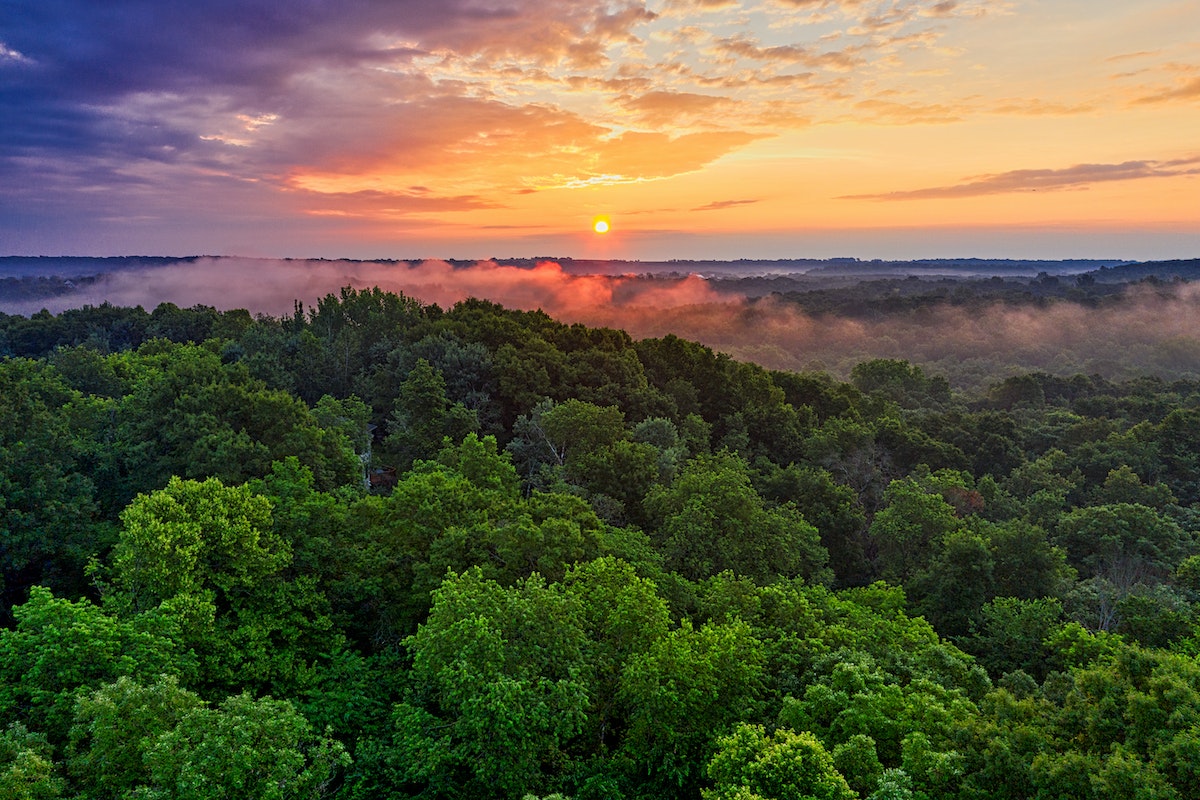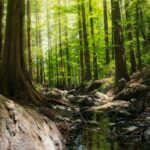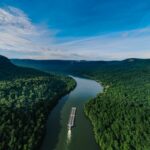How big is the Amazon rainforest?
The Amazon Rainforest is one of the largest and most biodiverse ecosystems on the planet, covering an area of approximately 6.7 million square kilometers.
To put that into perspective, it’s roughly the size of 48 contiguous United States combined.
The forest stretches from the Atlantic Ocean in the east to the tree line of the Andes in the west, and it’s home to millions of species of plants, animals, and insects.
Despite its vast size, the Amazon Rainforest is under threat from deforestation, mining, and other human activities.
According to recent reports, an area equivalent to 8,000 football fields is lost every day due to deforestation.
This destruction not only affects the animals and plants that live there but also contributes to climate change by releasing carbon dioxide into the atmosphere.
In this article, we will explore the size of the Amazon Rainforest, its importance, and the threats it faces.
Post Contents
How Big is the Amazon Rainforest?
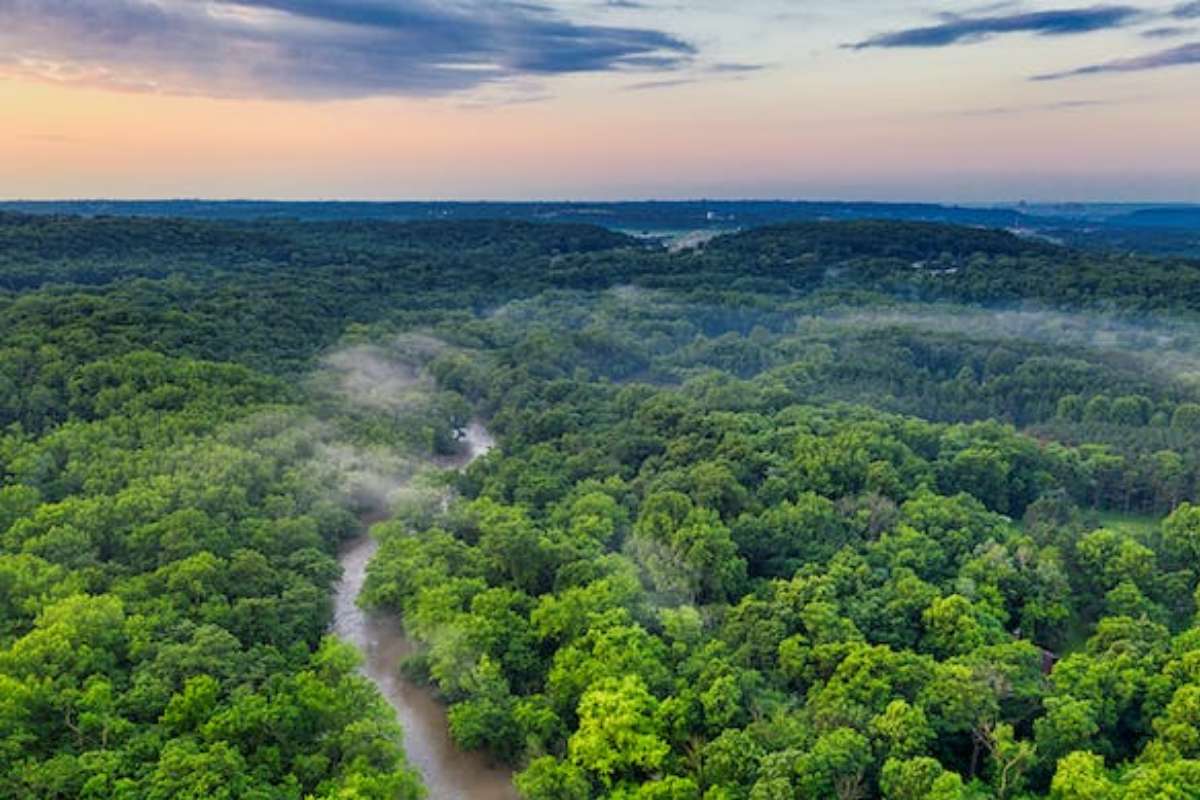
The Amazon Rainforest is a vast and diverse ecosystem that covers much of the Amazon Basin in South America.
It is the largest rainforest in the world, spanning over 6.7 million square kilometers (2.7 million square miles).
To put this into perspective, it is larger than the entire European continent and covers about 40% of the South American continent.
The Amazon Rainforest stretches from the Atlantic Ocean in the east to the Andean Mountains in the west.
It is bordered by several countries, including Brazil, Peru, Colombia, Venezuela, Ecuador, Bolivia, Guyana, Suriname, and French Guiana.
Brazil holds the largest portion of the Amazon Rainforest, covering about 60% of the total area.
The rainforest is home to an incredible variety of plant and animal species, including over 40,000 plant species, 1,300 bird species, and 2.5 million insect species.
It is also home to many indigenous communities who have lived in the region for centuries.
The Amazon Rainforest plays a crucial role in regulating the Earth’s climate, as it absorbs and stores large amounts of carbon dioxide.
It also helps to maintain the water cycle by releasing water vapor into the atmosphere, which then falls as rain across the region.
Despite its importance, the Amazon Rainforest is under threat from deforestation, mining, and other human activities.
It is estimated that over 17% of the forest cover has been lost in the last 50 years, which has a significant impact on the region’s biodiversity and climate.
It is important to take action to protect the Amazon Rainforest and ensure its survival for future generations.
Biodiversity in the Amazon Rainforest
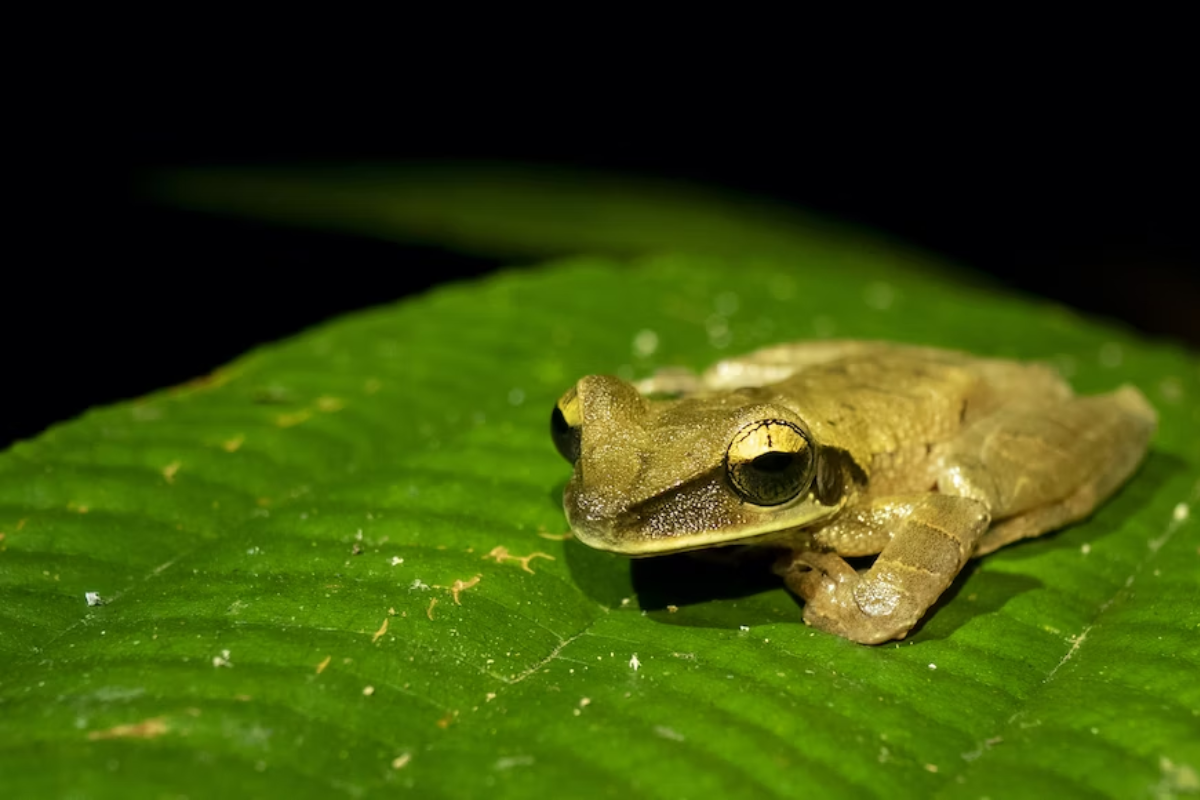
The Amazon Rainforest is known for its incredible biodiversity, making it one of the most important and unique ecosystems in the world.
With over 3 million species of plants and animals, the Amazon is home to a vast array of wildlife, including 16,000 tree species and 390 billion individual trees.
The Amazon Rainforest is also home to over 2,500 bird species, 2.5 million insect species, and countless other forms of wildlife.
The canopy of the forest is home to many species of monkeys, sloths, and other arboreal animals.
The rivers and streams that run through the forest are home to over 3,000 species of freshwater fish, including many species that are found nowhere else in the world.
The indigenous territories within the Amazon Rainforest are also home to many species of plants and animals that are used for medicinal purposes.
Many of these plants have been used for centuries by indigenous communities to treat a wide range of illnesses and conditions.
The Amazon Rainforest plays a crucial role in regulating the Earth’s climate, as it absorbs and stores large amounts of carbon dioxide.
It is also home to many important ecosystems, including tropical forests, which are some of the most biodiverse and productive ecosystems on Earth.
Threats to the Amazon Rainforest
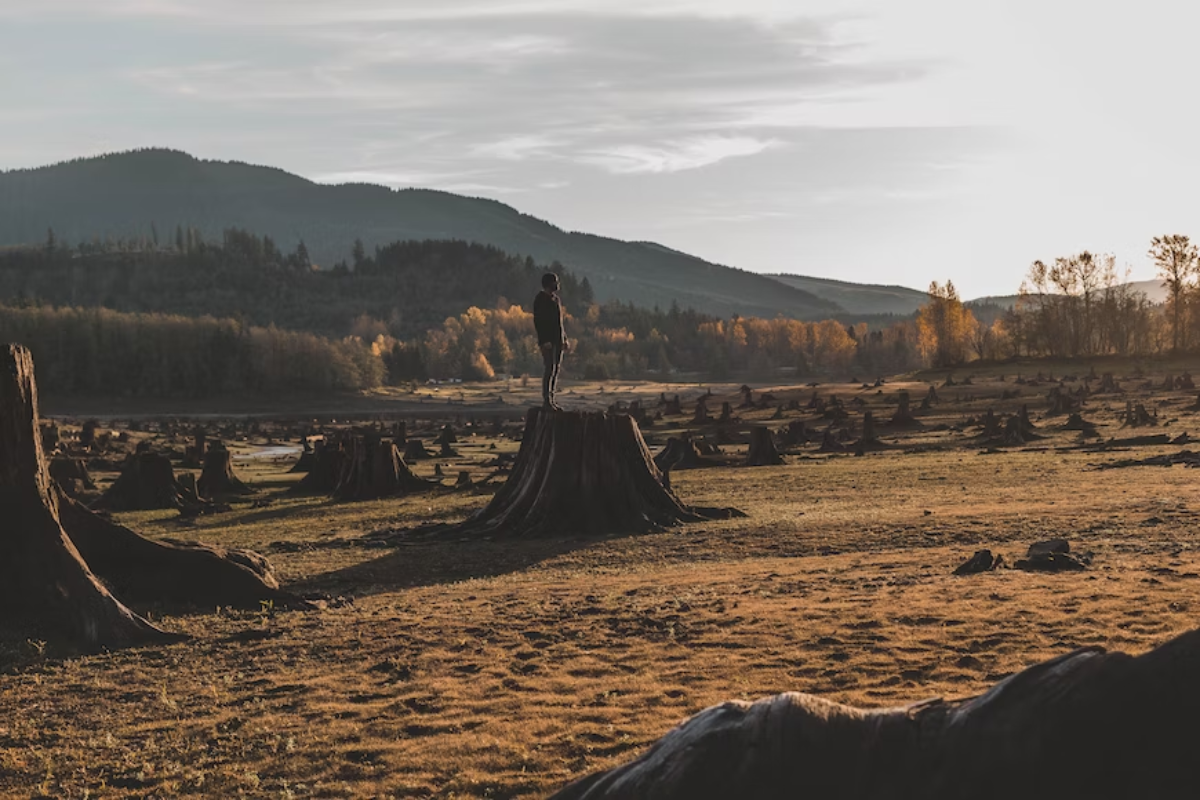
The Amazon Rainforest is one of the most diverse and important ecosystems on the planet.
However, it is facing a range of threats that could have devastating consequences for both the region and the world.
Here are some of the major threats to the Amazon Rainforest:
Deforestation
Deforestation is one of the biggest threats to the Amazon Rainforest.
Every year, large areas of the forest are cut down and burned to make way for agriculture, cattle ranching, and other forms of development.
This not only destroys the habitat of countless species, but it also releases large amounts of carbon dioxide into the atmosphere, contributing to climate change.
Climate Change
Climate change is another major threat to the Amazon Rainforest.
Rising temperatures and changes in rainfall patterns could lead to dieback and other forms of forest degradation.
In addition, the Amazon River and its tributaries could be affected by changes in ocean currents and sea levels, which could have serious consequences for the region’s water supply.
Indigenous People
Indigenous people who live in the Amazon Rainforest are also facing a range of threats.
Many are being displaced from their traditional lands by development projects, such as mining and infrastructure.
In addition, they are often subject to violence and discrimination, which can have serious consequences for their health and well-being.
Mining and Infrastructure
Mining and infrastructure projects are also major threats to the Amazon Rainforest.
These projects can cause widespread environmental damage, including deforestation, pollution, and soil erosion.
They can also displace indigenous people and other local communities, who often rely on the forest for their livelihoods.
Soy and Farmers
Soy and other agricultural crops are also driving deforestation in the Amazon Rainforest.
Large areas of forest are being cleared to make way for soy plantations and other crops.
This not only destroys the habitat of countless species, but it also contributes to climate change by releasing large amounts of carbon dioxide into the atmosphere.
Cattle Ranching
Cattle ranching is another major driver of deforestation in the Amazon Rainforest.
Large areas of forest are cleared to make way for pastureland, which is used to graze cattle.
This not only destroys the habitat of countless species, but it also contributes to climate change by releasing large amounts of carbon dioxide into the atmosphere.
In conclusion, the Amazon Rainforest is facing a range of threats that could have devastating consequences for both the region and the world.
Deforestation, climate change, mining, infrastructure, soy and farmers, cattle ranching, and indigenous people are all major factors contributing to the destruction of this vital ecosystem.
It is up to all of us to take action to protect the Amazon Rainforest and ensure that it remains a vibrant and healthy ecosystem for generations to come.
Conservation Efforts in the Amazon Rainforest

The Amazon Rainforest is one of the most biodiverse regions on Earth, home to millions of species of plants and animals.
However, the rainforest is under threat due to deforestation, mining, and other human activities.
To protect this valuable ecosystem, various conservation efforts have been implemented in the Amazon Rainforest.
Protected areas have been established in the Amazon Rainforest to conserve its biodiversity and natural resources.
The Amazon Region Protected Areas (ARPA) program has been successful in protecting a California-sized portion of the Amazon across nearly 100 different sites.
The goal is to take 150 million acres of the Brazilian Amazon rainforest and turn it into a combination of sustainable-use and strict protected areas.
Sustainable development is also being promoted in the Amazon Rainforest.
The Nature Conservancy is working with partners to guide sustainable development in places like the Tapajos River, one of the Amazon’s largest and most diverse tributaries.
Sustainable farming is being encouraged as a way to provide economic benefits to local communities while protecting the rainforest.
Ranchers and companies are also being encouraged to adopt sustainable practices in the Amazon Rainforest.
The Amazon Soy Moratorium, for example, has helped to reduce deforestation caused by soybean farming in the Amazon.
The moratorium prohibits the purchase of soybeans grown on newly deforested land in the Amazon.
Local communities are also being involved in conservation efforts in the Amazon Rainforest.
The Community-Based Conservation Program (CBC) provides support to local communities to manage and protect their natural resources.
The program has been successful in reducing deforestation and improving the livelihoods of local communities.
Conservation goals in the Amazon Rainforest are ambitious, but progress is being made.
While agriculture and development continue to pose a threat to the rainforest, sustainable practices and conservation efforts are helping to protect this valuable ecosystem for future generations.
Key Takeaways
If you are wondering how big the Amazon Rainforest really is, here are some key takeaways:
- The Amazon Rainforest occupies the drainage basin of the Amazon River and its tributaries in northern South America.
- The rainforest covers an area of 2,300,000 square miles (6,000,000 square km), which is approximately 40% of South America.
- The Amazon rainforest is by no means bereft of people; around thirty million people live within the basin.
- The Amazon biome encompasses 6.7 million km2 and is shared by eight countries (Brazil, Bolivia, Peru, Ecuador, Colombia, Venezuela, Guyana, and Suriname).
- The Amazon Rainforest is thought to be home to 10% of known species on earth.
As you can see, the Amazon Rainforest is a massive and diverse ecosystem that is home to millions of people and countless species of plants and animals.
Its size and importance to the planet cannot be overstated.







